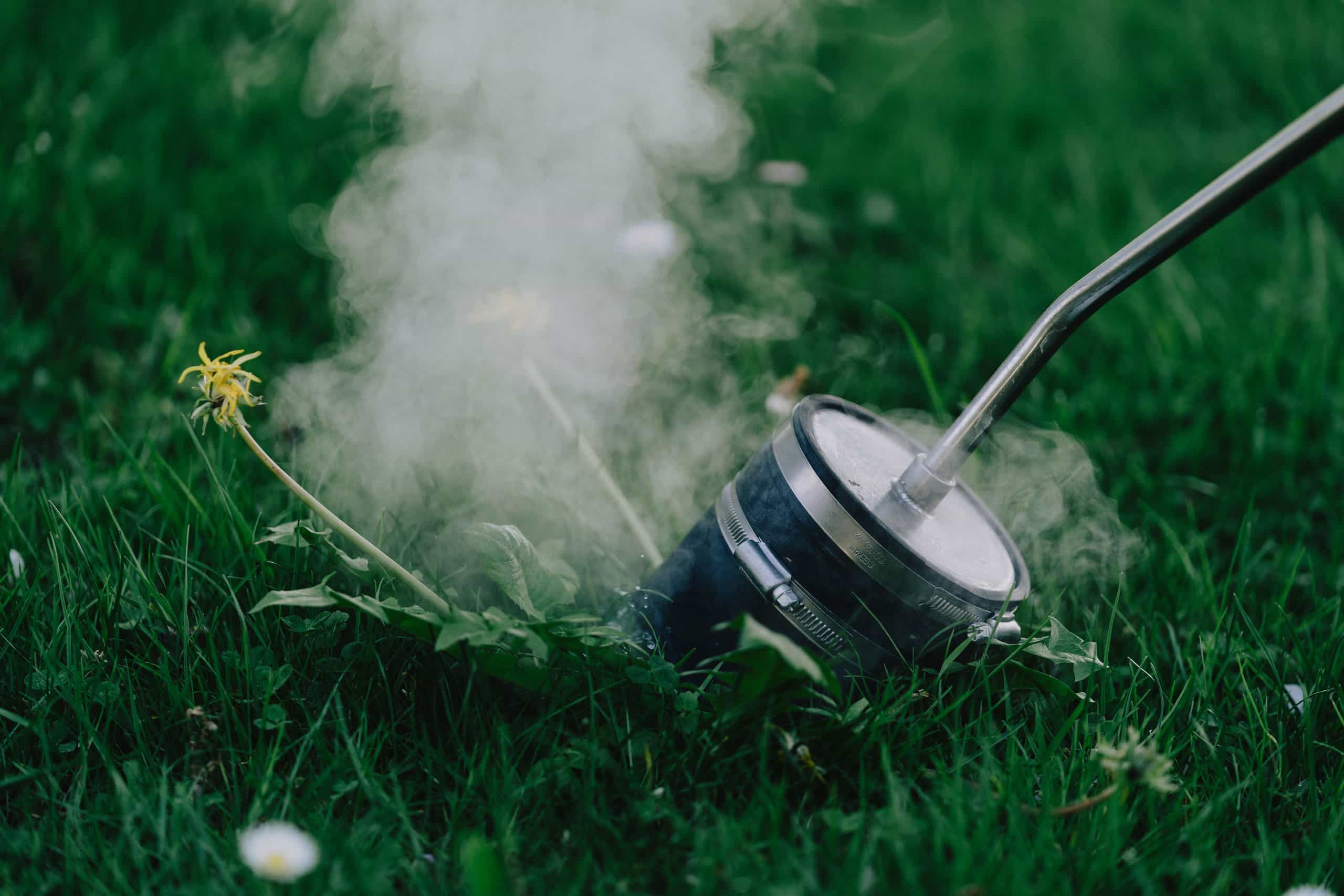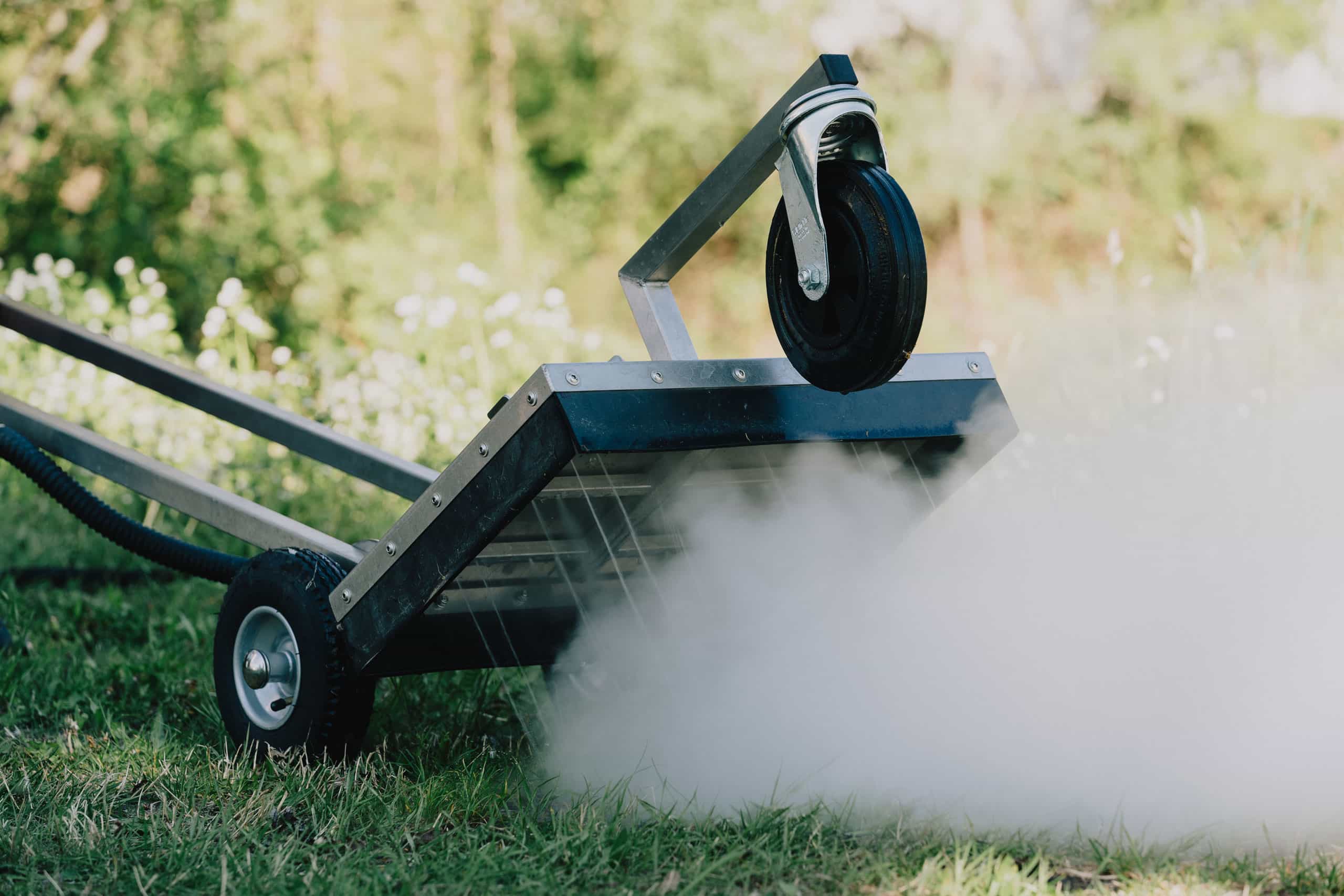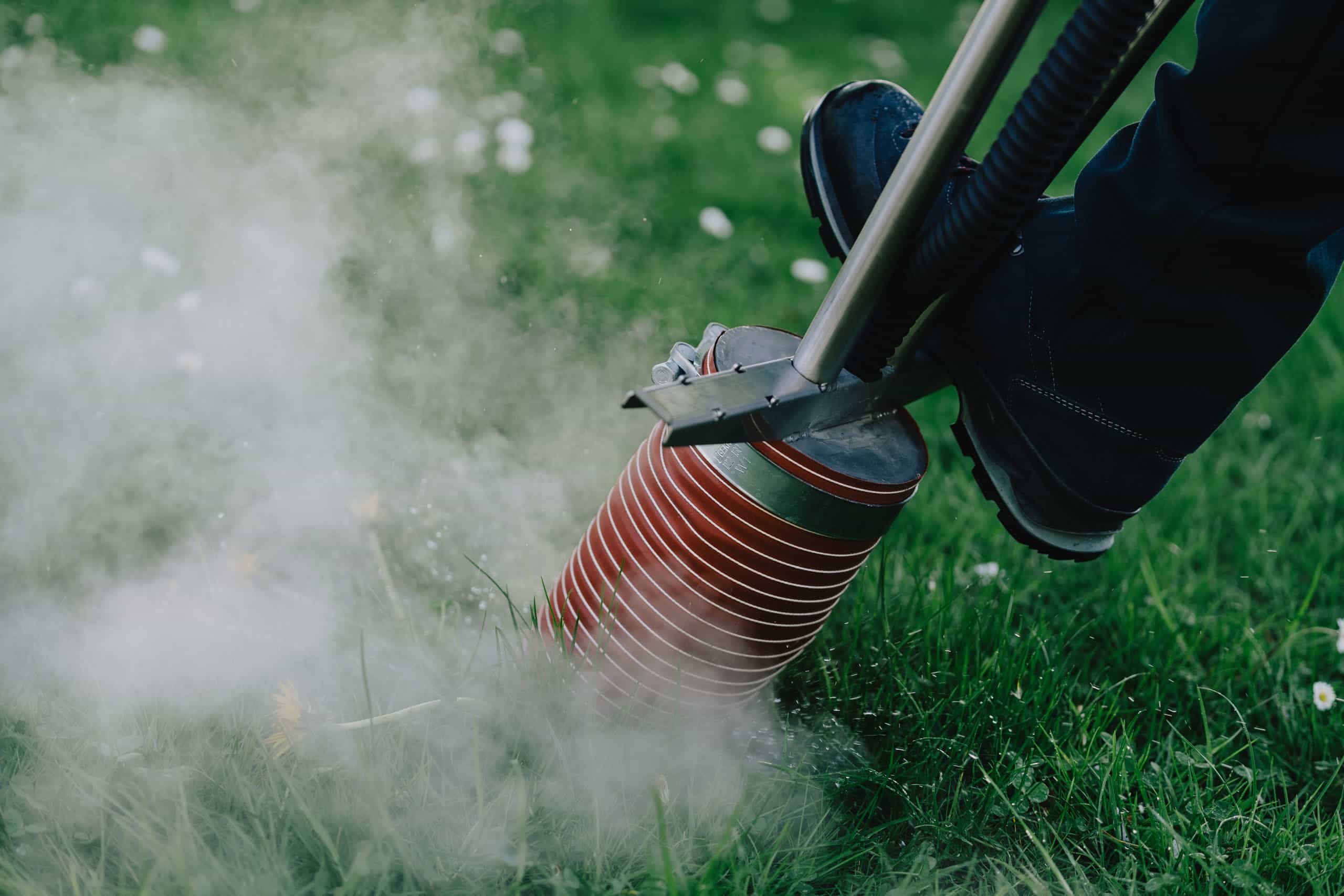Thermal weed removal
Thermal weed removal involves the use of steam at over 100 °C to destroy the protein structure of the plant. The vapour penetrates deep into even the smallest gaps in the ground, reaching all the way down to the proteins in the roots. Once destroyed, the cells are unable to renew, causing the weed to die. This method of weed removal is natural and sustainable. It destroys weeds in a targeted manner without harming the environment and surrounding crops. Thermal weed removal works on practically every surface and only requires a full tank of water.
Thermal weed removal is highly effective and achieves long-lasting effects. KECKEX weed removers are also ideal for deep cleaning. They are able to clean surfaces such as asphalt, kerbs, walls, concrete and gravel surfaces.
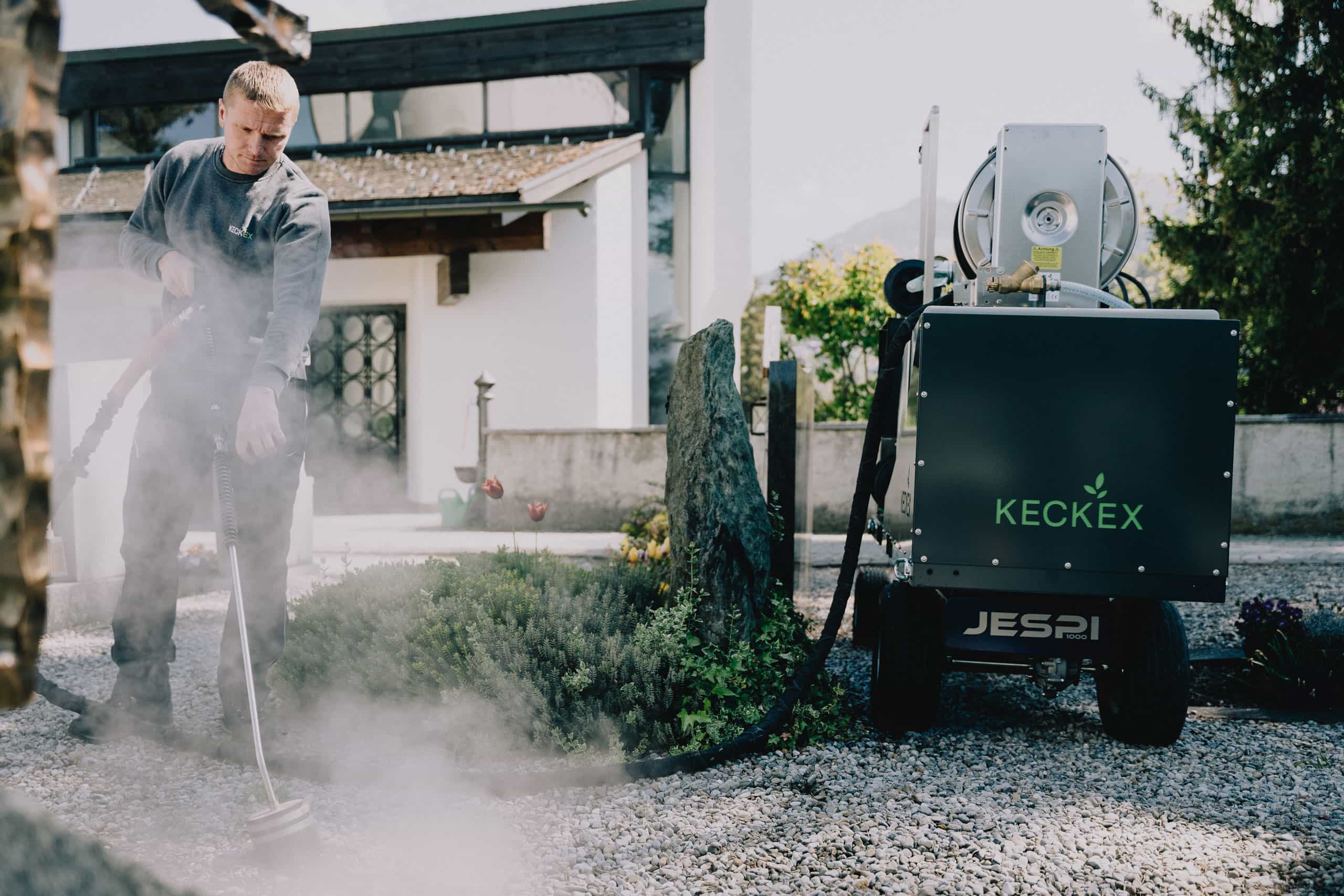

By loading the video, you agree to YouTube's privacy policy.
Learn more
Discover the versatility of KECKEX products for yourself.
Want to find out more?
Book a consultation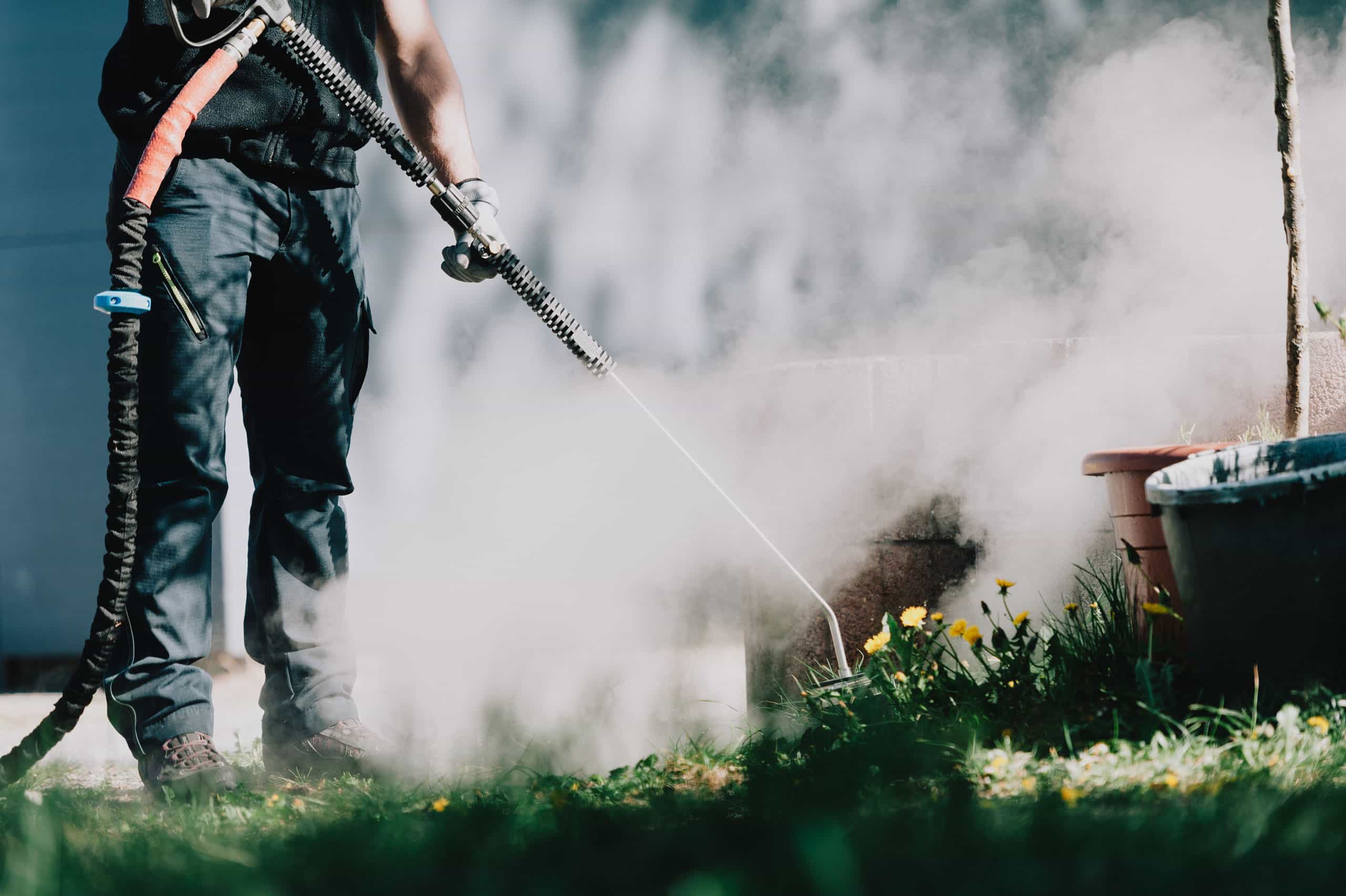
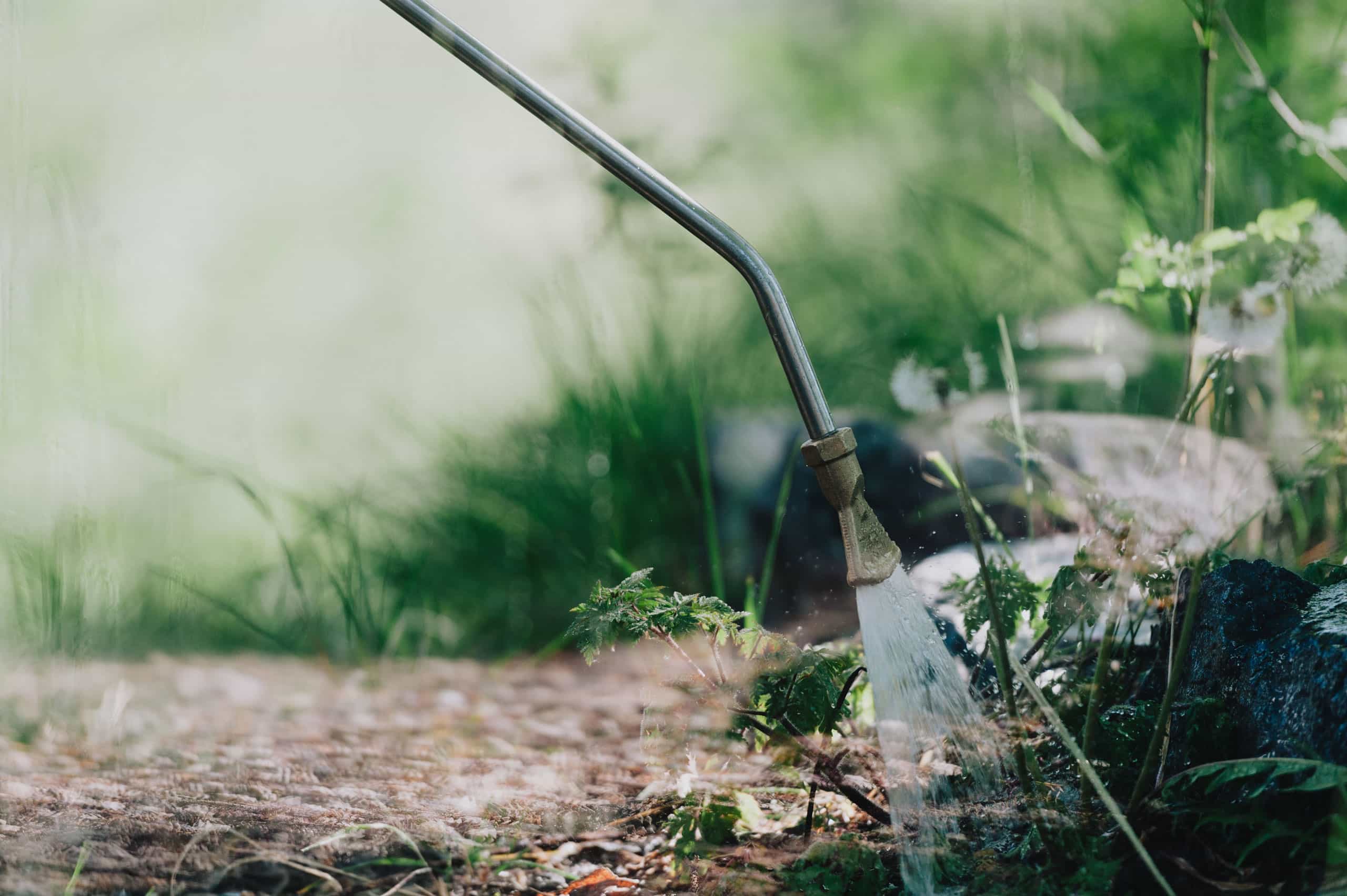
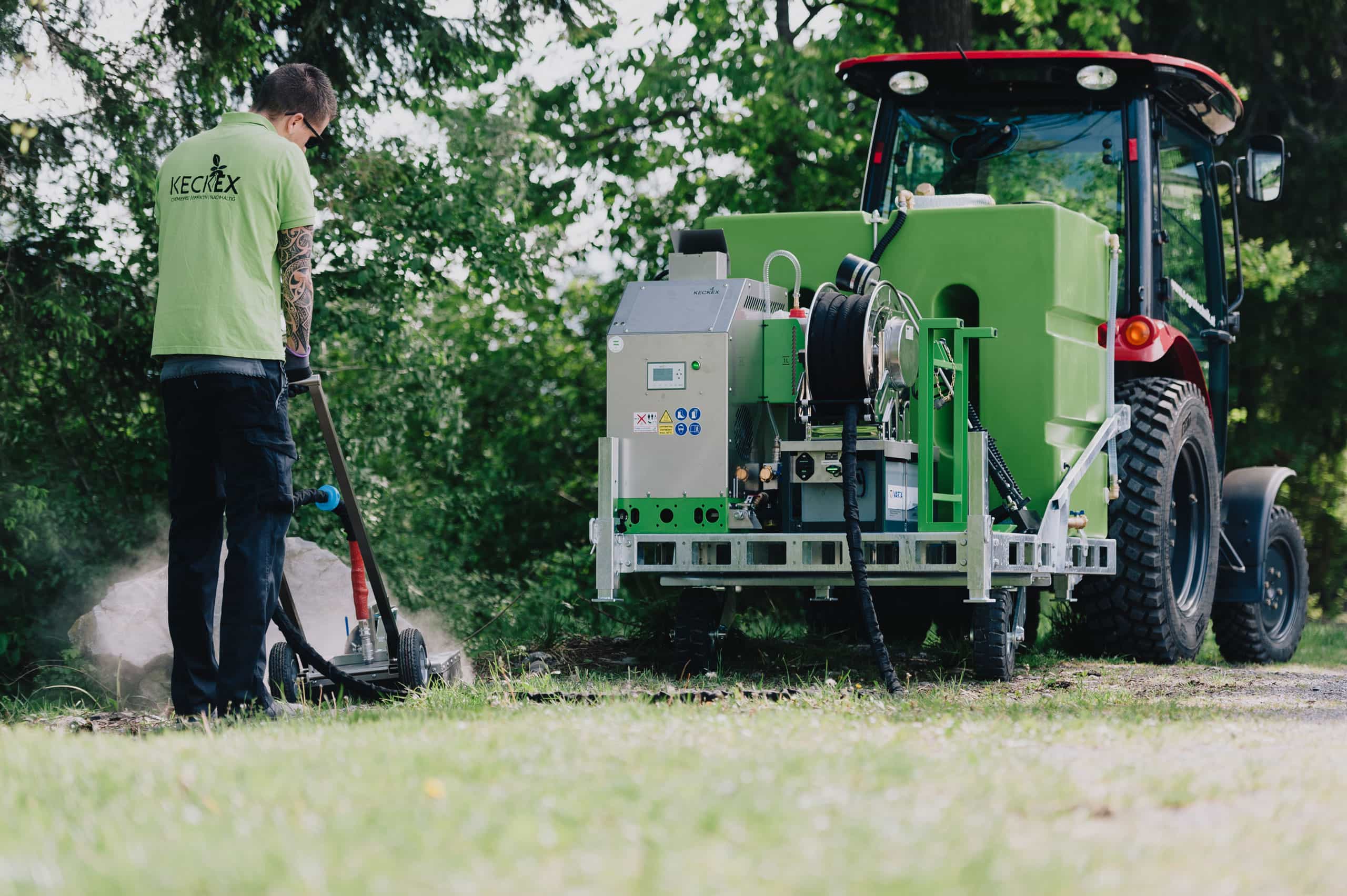
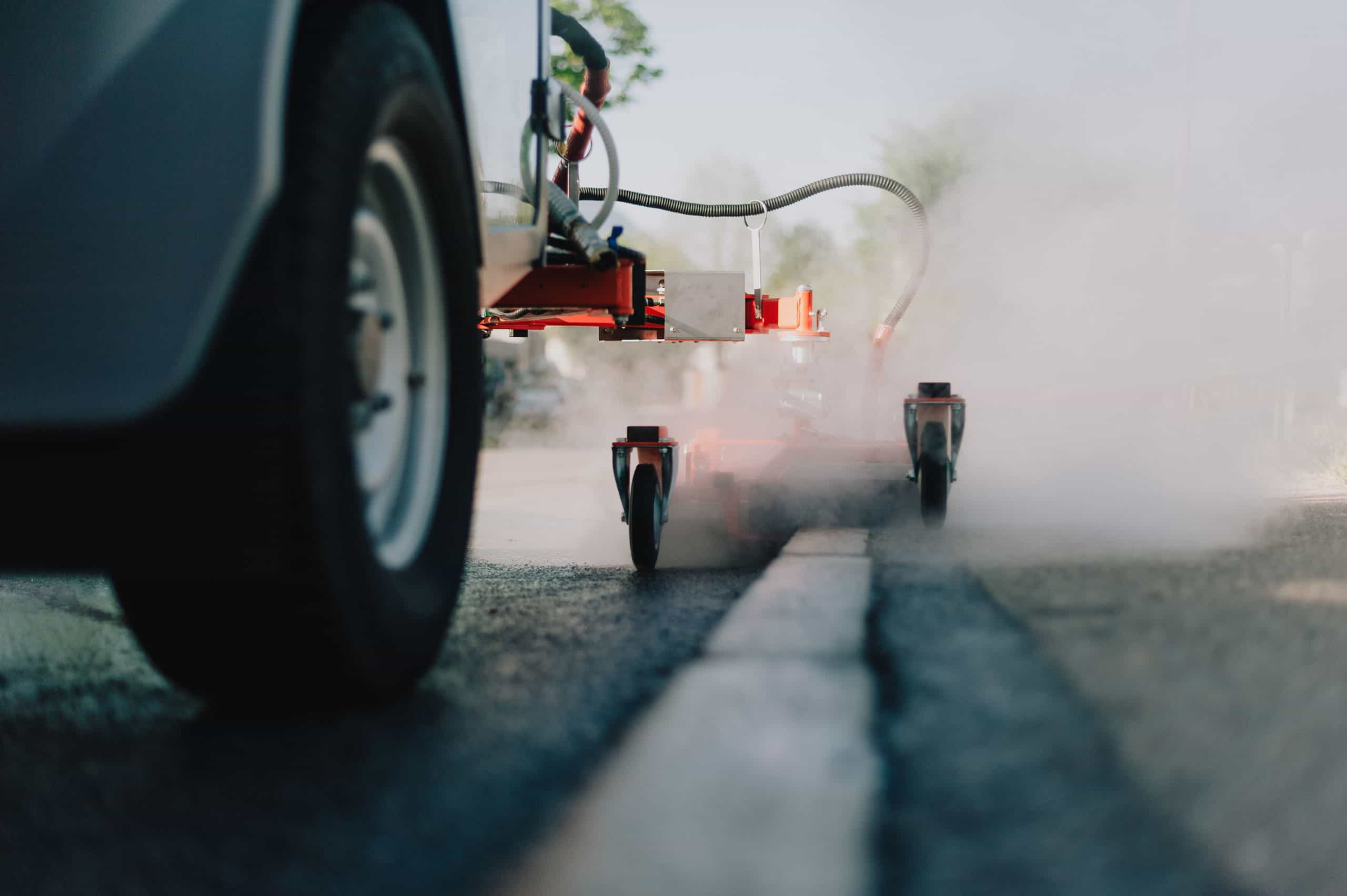
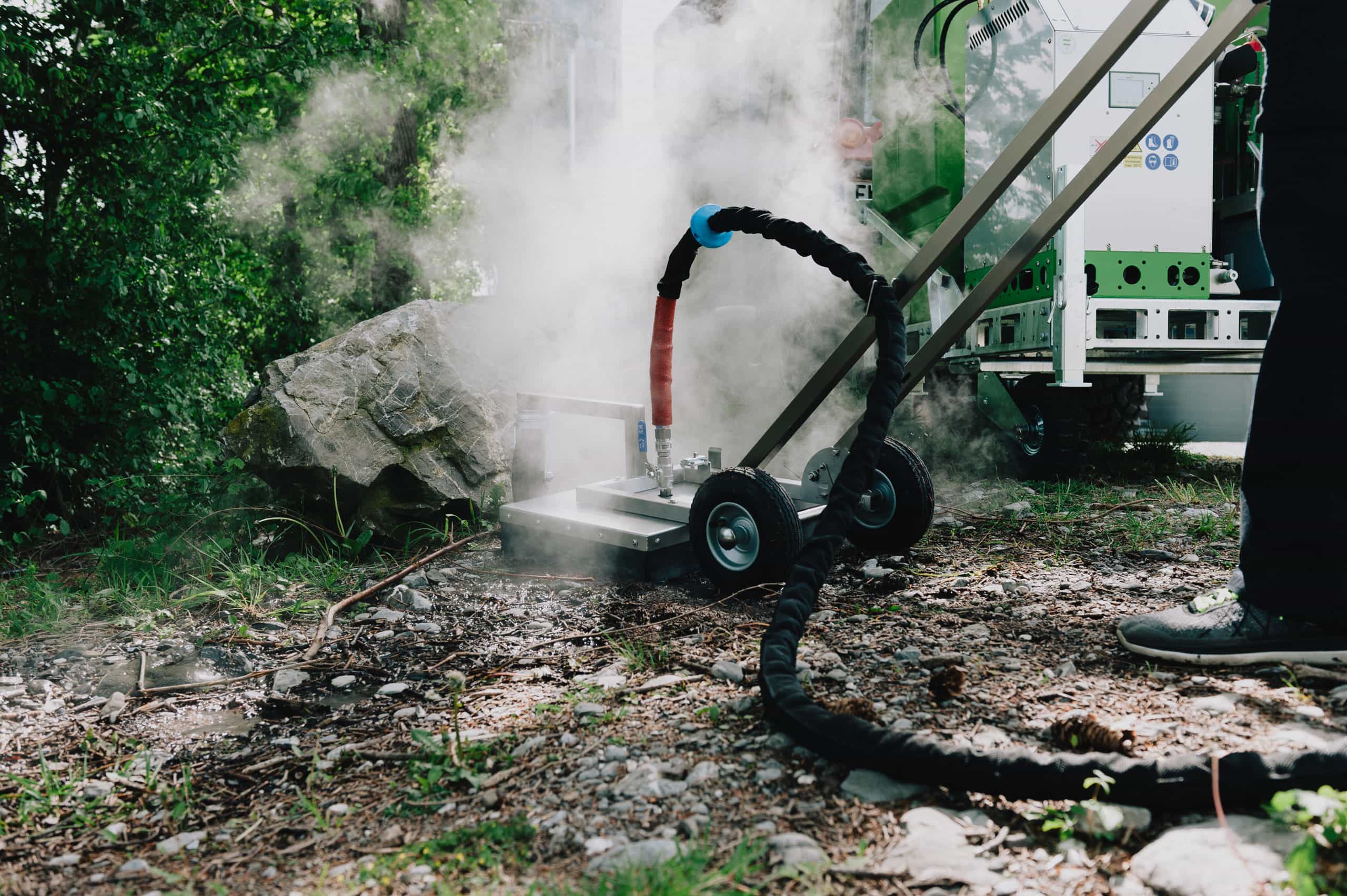
QUESTIONS & ANSWERS
We recommend the KECKEX method for initial application. This involves treating the desired area with the KECKEX devices, removing the resulting fertiliser from dead plants after 5-10 days and then immediately treating the desired area again with the KECKEX devices. Continuous treatment promises the best results.
The number of applications depends very much on external influences and varies depending on the area of application, weather, seed flight, plant species and vegetation. We recommend following the KECKEX method for the first application, then carrying out the application approx. 3-6 times a year. This reduces the amount of weeds each year and existing weeds are continuously weakened. It should be noted, however, that if new seeds are planted in nutritious soil, a plant will grow there again (regardless of which weedkiller is used).
The perfect conditions are a dry and warm surface for application, followed by a few dry and sunny days without rain. On the other hand, changeable weather, such as sun during the day and rain in the evening, acts like a growth injection.
In principle, the KECKEX method can be used on any plant, but the plant species and genus are decisive for the duration of the application. The basic rule here is: the larger and stronger the weed, the more heat and water are required. Dandelions, for example, are particularly stubborn.
It is unfavourable to carry out an application in pouring rain, as the soil has cooled down and is often unable to absorb the hot water. This means that the water cannot penetrate to the roots and the effect is non-existent.
The protein shock in the plant strongly irritates the colour pigmentation, causing it to turn a pungent green. This is an indicator of a successful application.
There is no general answer to this question, as the type of plant, soil conditions and vegetation can vary greatly. The amount of water applied by the various machine types must also be taken into account. More water means a faster travelling speed. From experience, however, we can say that it gets faster after each application.
The mixture of hot water and steam triggers a protein shock in the plant, the plant is no longer able to absorb water and subsequently dries out. The KECKEX method damages the root collar of the plant, which the plant needs to be able to sprout. If this root collar is continuously damaged, the plant can no longer sprout and withers away completely.
The longer the plant and especially the roots are exposed to the hot water vapour mixture, the more they are damaged and the greater the success. Depending on the type of plant and accessories, this can be in the range of seconds.
The aim of each treatment is to reach the roots and damage them with the mixture of hot water and steam. Very individually, depending on the type of plant, this can be achieved sustainably after just one application (moss), whereas other weeds (e.g. dandelions) need to be treated several times.
Even the nuclear disaster in Chernobyl did not manage to destroy weeds forever. When a plant seed meets nutritious soil, the plant will grow – we and nobody else can stop this process. However, the KECKEX method can counteract this very well and, above all, without chemicals.
A mixture of water and steam at temperatures of up to 130 °C ensures that the weeds on the treated surface are tackled in the same way as the roots. As our accessories are completely sealed, the vapour is trapped, creating an atmosphere above 100 °C, which prevents the water from cooling down between leaving the nozzle and hitting the ground.
The steam works superficially and prepares the atmosphere so that the hot water hits the floor hot and uncooled. With pure hot water applications, more water must be used as it often hits the floor unprotected from a distance and therefore immediately loses a few degrees and therefore also its effect.
a. Flaming:
In addition to the great risk of fire to which you are exposed, flaming has a growth-promoting effect, just like a forest fire. Aborigines in Australia, for example, have always set fires to make areas more fertile.
b. Hot air:
Hot air is similarly dangerous to flaming and the effect is questionable. In addition, large quantities of propane gas are used. The effect is said to be better when the surface is wet – so you can work with vapour straight away.
c. Infrared:
Handling is extremely simple and inexpensive. However, the effect is also questionable here, and it could also cause problems for people in the neighbourhood with pacemakers.
d. Foam:
The costly foam adds no value, looks unnatural and often contains palm oil. In addition, it attracts insects and passers-by are frightened by the display. On non-horizontal surfaces, the foam flows away uncontrollably.
e. Vapour:
The pure application with vapour ensures a quick and environmentally friendly destruction of weeds on the surface. However, this is only superficial and the weeds grow back very quickly.
As we only use water, there are no harmful residues on the plants. During an application, bees and other insects fly away in advance and are therefore not harmed.
